- Kenmore refrigerator water filters
- Whirlpool refrigerator water filters
- Samsung refrigerator water filters
- GE refrigerator water filters
- LG refrigerator water filters
- Frigidaire refrigerator water filters
- KitchenAid refrigerator water filters
- Maytag refrigerator water filters
- Kenmore Elite refrigerator water filters
- Estate refrigerator water filters
- GE Profile refrigerator water filters
- Amana refrigerator water filters
- Bosch refrigerator water filters
- Dacor refrigerator water filters
- Electrolux refrigerator water filters
Types of riding mower blades video
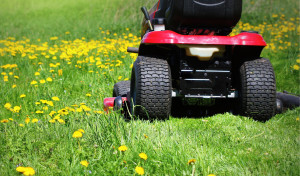

If you're not sure what the difference is between a 2-in-1 blade and a 3-in-1 blade, or bagging and high-lift blades, this video explains what they are and when you should use each on your riding mower.
If you're having problems with your lawn tractor, check out our troubleshooting advice and repair guides.
Hi, Wayne here from Sears PartsDirect. Today we're going to talk about the types of riding mower blades and when you should use each one.
Standard-issue blades
Your riding mower probably came with one of these common types of blades when you bought it.
Your owner's manual may list optional blades available for your mower. Not all of the blades that we cover in this video are compatible with your mower, so check your manual regarding blade use to avoid problems.
High-lift blade
Here's a high-lift blade, which some manufacturers call a bagging or 2-in-1 blade. The curved tips lift the grass clippings and help blow them through the side discharge chute or into the bag if you have one attached.
Mulching blade
The second type is the mulching blade. It has a contoured shape that swirls the grass clippings around inside the deck. Long cutting edges repeatedly recut the grass clippings into mulch.
To make the mulch drop rather than go through the discharge chute, you have to cover the discharge port. You can buy a mulching kit that includes mulching blades and a plug for the discharge opening. If your mower came with blades that mulch, it probably also came with a plug for the discharge port. Once you have the mulching plug, you just have to replace the mulching blades when they wear out.
3-in-1 blade
Next, we’ve got the 3-in-1 blade, which combines the features of the high-lift blade and mulching blade. You can use it for side discharge, bagging or mulching.
When the riding mower uses a standard-issue 3-in-1 blade, use the optional mulching plug to cover the deck's discharge port for mulching.
Ninja blade
Some riding mowers use a Ninja blade that has 6 cutting surfaces designed to finely cut grass clippings into mulch. Ninja blades also help lift grass clippings when bagging.
Although this blade looks cool, you can't use it on every mower. It's designed for use only on compatible Snapper Ninja mowers.
Specialty blades
If you want a blade that is a cut above what came with your mower or has a unique function, one of these blades might be just what you’re looking for.
Check your owner's manual for blade use guidelines before choosing a specialty blade. Not all specialty blades are compatible with every mower, so make sure that the one you’ve got your eye on will work on your riding mower.
Slotted blade
Some after-market manufacturers offer specialty 3-in-1 and mulching blades with slots on the side that face up, away from the ground. The slots help control airflow under the mower so grass clipping are recut more often—making finer mulch.
Sand blade
The sand blade is for mowing lawns on sandy soil. It has low-lift fins that help move grass and sand out the side discharge chute. Sand blades help prevent mower deck wear when mowing over sandy ground.
Maintenance tips
Now for some maintenance tips.
Remember to keep your mower blades clean and sharp, and replace them often.
To make blade replacement easier, use this universal blade removal tool that holds the blade in place when removing and replacing the blade bolt. Using this tool is easier and safer than using a block of wood or your hand to hold the blade.
Also, keep your mower deck clean and use a deck lubricant like Mo-Deck spray for the best mulching and discharge.
We hope this video helps you out today. Thanks for watching and subscribe to see new videos when we post them.
Most common symptoms to help you fix your riding mowers & tractors
Choose a symptom to see related riding mower and lawn tractor repairs.
Main causes: faulty battery, bad alternator…
Main causes: damaged cutting blade, worn deck pulley, damaged mandrel pulley, loose fasteners on mower deck components…
Main causes: damaged tie rods, bent or worn wheel spindle, worn front axle, damaged sector gear assembly…
Main causes: worn or broken blade belt, broken belt idler pulley, blade clutch cable failure, bad PTO switch, damaged ma…
Main causes: punctured tire or inner tube, leaky valve stem, damaged wheel rim…
Main causes: engine overfilled with oil, leaky head gasket or sump gasket, damaged carburetor seals, cracked fuel pump, …
Main causes: clogged carburetor, damaged flywheel key, dirty spark plug, stale fuel, improper valve lash, engine needs a…
Main causes: shift lever needs adjustment, neutral control needs adjustment…
Main causes: worn or broken ground drive belt, bad seat switch, transaxle freewheel control engaged, transaxle failure, …
Most common repair guides to help fix your riding mowers & tractors
These step-by-step repair guides will help you safely fix what’s broken on your riding mower or lawn tractor.
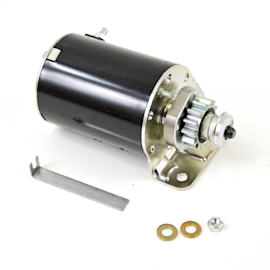
How to replace the starter motor on a riding lawn mower
If you hear the solenoid click but don’t hear the starter motor spin when you turn the key, follow these steps to replac…
Repair difficulty
Time required
30 minutes or less
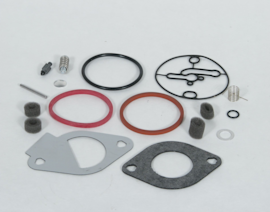
How to rebuild a riding lawn mower carburetor
Get your sputtering carburetor running smoothly in 60 minutes.…
Repair difficulty
Time required
60 minutes or less
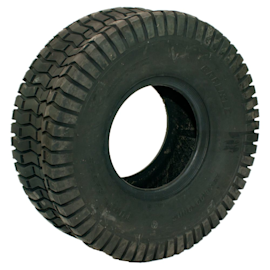
How to replace a riding lawn mower rear tire
Your mower can’t run on a damaged rear tire. Here’s how to install a new one.…
Repair difficulty
Time required
60 minutes or less
Effective articles & videos to help repair your riding mowers & tractors
Use the advice and tips in these articles and videos to get the most out of your riding mower or lawn tractor.

Learn about all the convenient features on our Sears PartsDirect website that make your parts purchases easier.…

Get answers to frequently asked questions about Sears and Sears PartsDirect.…
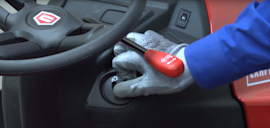
Check the starter solenoid, starter motor, wiring, battery and engine.…